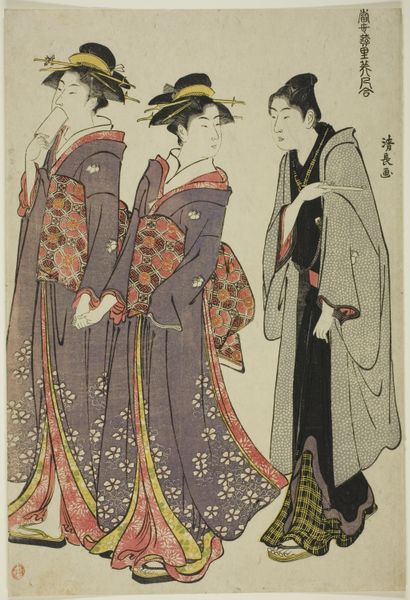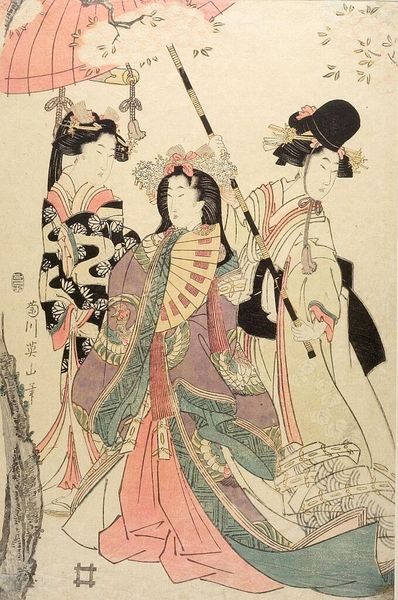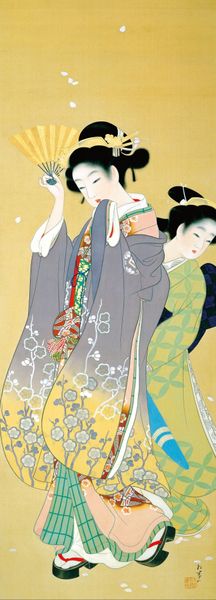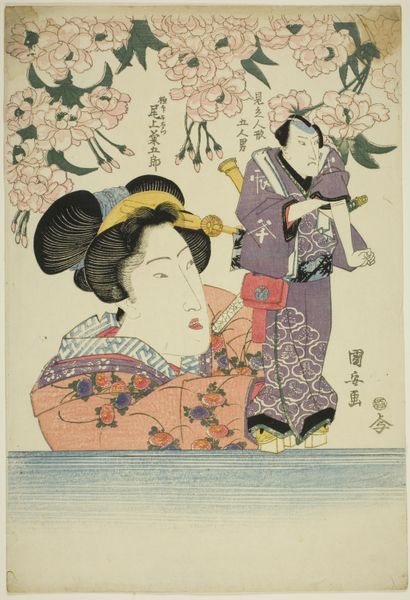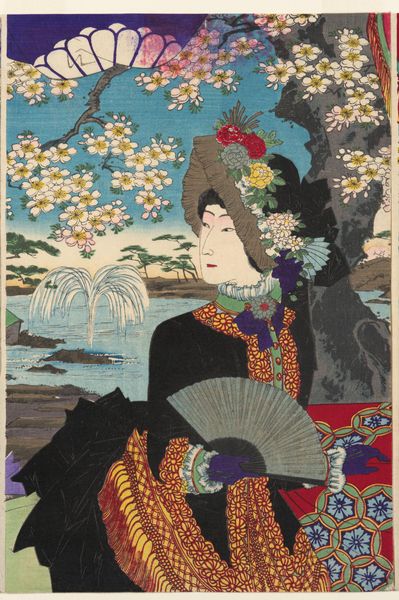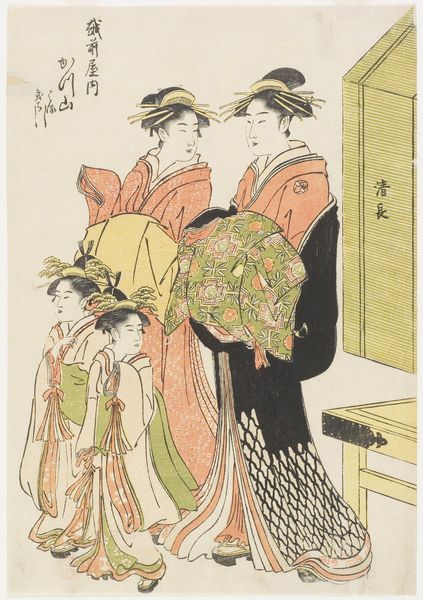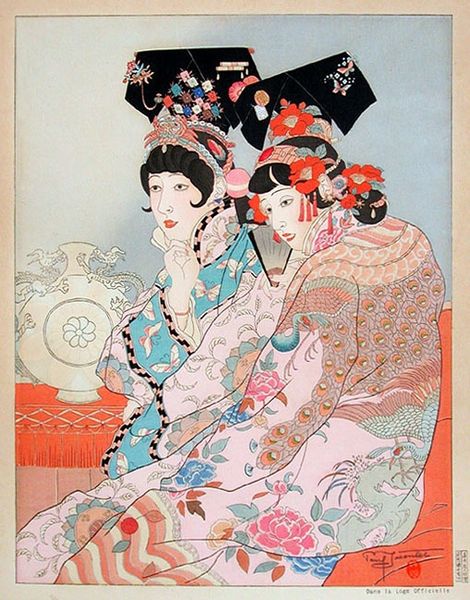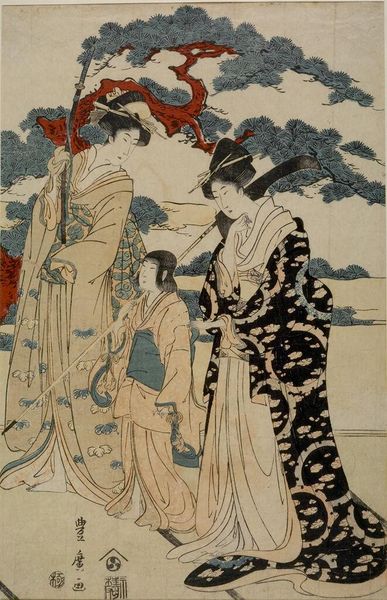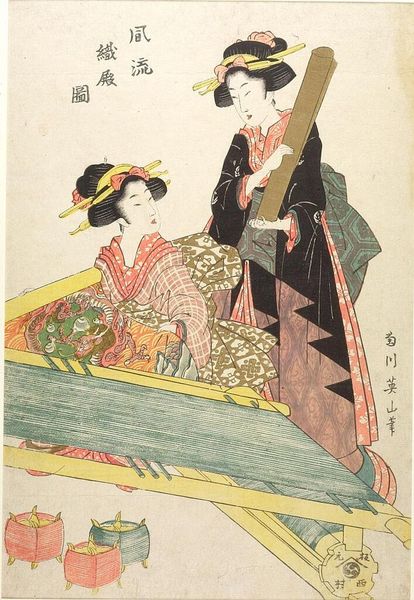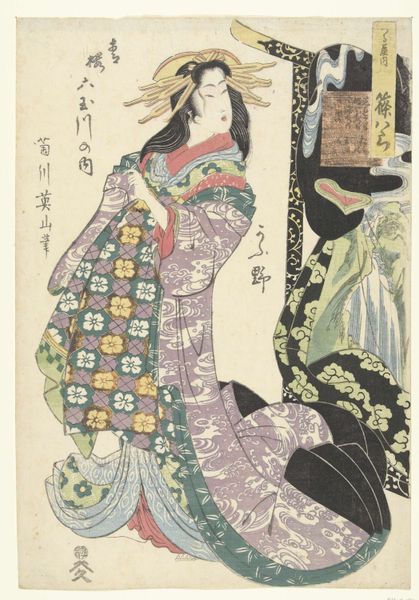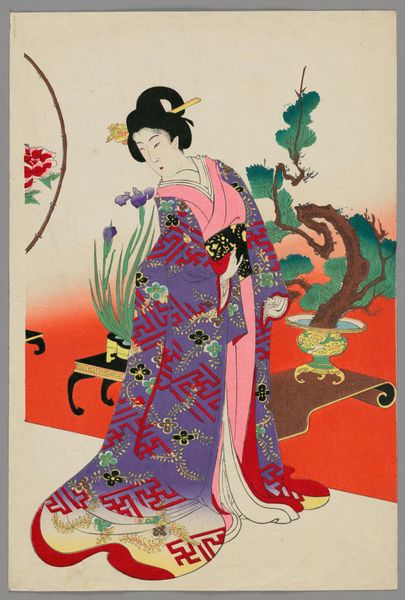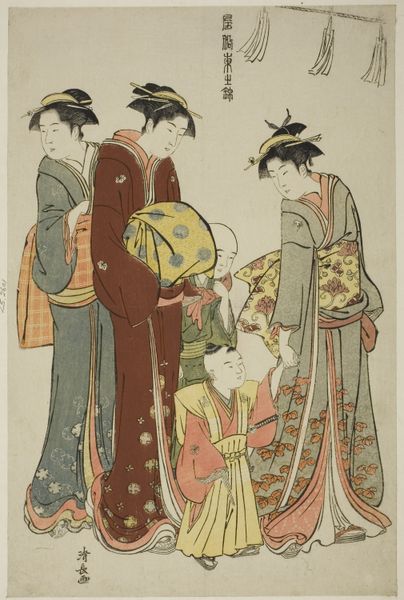
Copyright: Public domain Japan
Curator: This is Paul Jacoulet's woodblock print "La Statuette Thang, Mandchoukuo" from 1956. It features a woman in traditional dress. What strikes you about it? Editor: The immediate feeling is one of restrained opulence. The color palette is rich but muted, the lines are delicate, and the composition—particularly the placement of the woman and the statue against that hazy landscape—creates a dreamlike quality. Curator: Indeed. Jacoulet, although French, was deeply influenced by Ukiyo-e traditions. He spent years in Asia and became renowned for his sensitive depictions of different Asian cultures. The woman's costume is particularly evocative. Editor: Absolutely. Note the intricate detailing in the textiles. The patterns and the colour-blocking contribute to the richness of the piece. Observe how the curves of the garment's design elements oppose those of the dragon on its face, contributing further layers of meaning. Curator: The dragon and phoenix motifs are not just decorative. They symbolize imperial power and grace, key aspects of the Manchu dynasty in Manchuria. The title, referencing "La Statuette Thang," suggests a link to an idealized past. Is she longing for that lost era? Editor: That’s an astute point, the pose seems introspective, doesn't it? The use of the mirror creates a layered narrative. We see not just a reflection of her and the statue, but also a glimpse of a stylized landscape, maybe hinting at an imagined, idyllic homeland or, indeed, the glories of a lost empire. Curator: The Thang dynasty statuette, as you pointed out, adds another layer. Its somewhat Westernized appearance is interesting given Jacoulet’s focus on preserving traditional representations. Perhaps a commentary on cultural exchange or even the inevitable impact of the West on the East? Editor: Possibly, but also the rendering of that "Westernized" form seems to speak more about the forms of classical antiquity as it has filtered its way East, again bringing multiple meanings, histories and approaches to cultural image making to play with each other. Overall, the work provides a complex mediation on history, cultural identity, and artistic representation. Curator: It is indeed. A fusion of styles and a quiet reflection on a changing world. Editor: A really striking, elegant print and its impact on cultural imagination lingers long after seeing it.
Comments
No comments
Be the first to comment and join the conversation on the ultimate creative platform.
